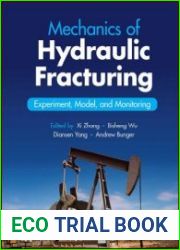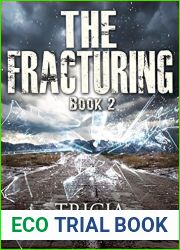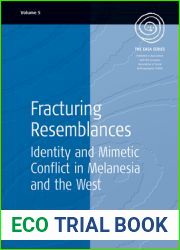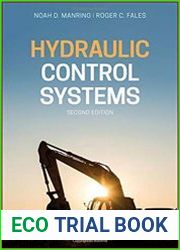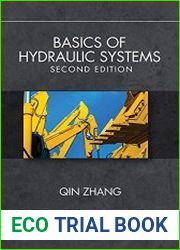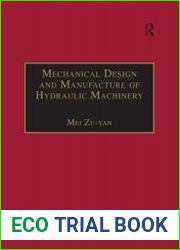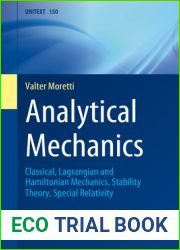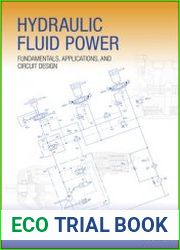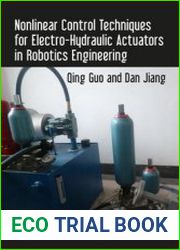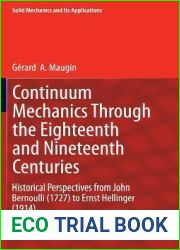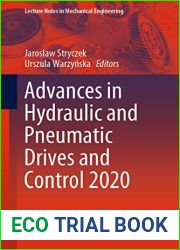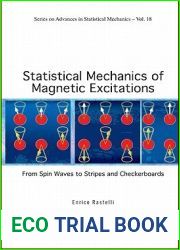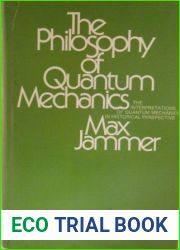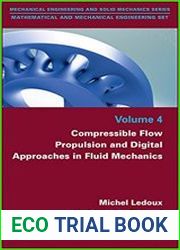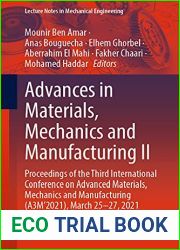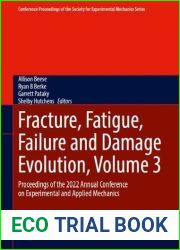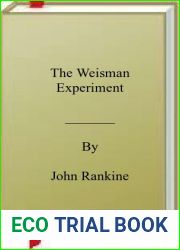
BOOKS - SCIENCE AND STUDY - Mechanics of Hydraulic Fracturing Experiment, Model, and ...

Mechanics of Hydraulic Fracturing Experiment, Model, and Monitoring
Author: Bisheng Wu, Diansen Yang, Xi Zhang
Year: 2022
Pages: 291
Format: PDF
File size: 51,8 MB
Language: ENG

Year: 2022
Pages: 291
Format: PDF
File size: 51,8 MB
Language: ENG

The authors present a comprehensive review of the current understanding of the physics of hydraulic fracture processes and their applications in oil and gas production, carbon capture and storage, and environmental remediation. They also discuss the challenges associated with these processes and suggest directions for future research. The book is divided into four parts: Part I provides an introduction to the principles of hydraulic fracturing, including the fundamentals of fluid flow in fractured rock systems, the mechanisms of fracture propagation, and the impact of reservoir properties on fracture growth. Part II covers experimental methods used to study hydraulic fracturing, including laboratory experiments, field observations, and numerical modeling. Part III reviews the state-of-the-art techniques used to monitor and measure fracture growth, including seismic monitoring, microseismic monitoring, and imaging technologies. Finally, Part IV explores emerging areas of research that are expected to shape the future of hydraulic fracturing, such as the use of nanoparticles and biodegradable polymers to enhance fracture growth, and the development of new materials and technologies for more efficient and sustainable fracturing operations.
Авторы представляют всесторонний обзор современного понимания физики процессов гидроразрыва и их применения в добыче нефти и газа, улавливании и хранении углерода и восстановлении окружающей среды. Они также обсуждают проблемы, связанные с этими процессами, и предлагают направления будущих исследований. Книга состоит из четырех частей: Часть I содержит введение в принципы гидроразрыва, включая основы потока жидкости в системах трещиноватых пород, механизмы распространения трещин и влияние свойств пласта на рост трещин. Часть II охватывает экспериментальные методы, используемые для изучения гидроразрыва пласта, включая лабораторные эксперименты, полевые наблюдения и численное моделирование. В части III рассматриваются современные методы, используемые для мониторинга и измерения роста трещин, включая сейсмический мониторинг, микросейсмический мониторинг и технологии визуализации. Наконец, в части IV рассматриваются новые области исследований, которые, как ожидается, сформируют будущее гидроразрыва, такие как использование наночастиц и биоразлагаемых полимеров для усиления роста трещин, а также разработка новых материалов и технологий для более эффективных и устойчивых операций гидроразрыва.
s auteurs présentent un aperçu complet de la compréhension moderne de la physique des processus de fracturation hydraulique et de leurs applications dans la production de pétrole et de gaz, le captage et le stockage du carbone et la restauration de l'environnement. Ils discutent également des défis liés à ces processus et suggèrent des orientations pour la recherche future. livre se compose de quatre parties : La partie I contient une introduction aux principes de la fracturation hydraulique, y compris les bases de l'écoulement du liquide dans les systèmes de roches fracturées, les mécanismes de propagation des fissures et les effets des propriétés de la fracture sur la croissance des fissures. La partie II couvre les méthodes expérimentales utilisées pour étudier la fracturation hydraulique, y compris les expériences en laboratoire, les observations sur le terrain et la modélisation numérique. La partie III traite des méthodes modernes utilisées pour surveiller et mesurer la croissance des fissures, y compris la surveillance sismique, la surveillance microsismique et les technologies d'imagerie. Enfin, la partie IV traite de nouveaux domaines de recherche qui devraient façonner l'avenir de l'hydrofraction, tels que l'utilisation de nanoparticules et de polymères biodégradables pour renforcer la croissance des fissures, ainsi que le développement de nouveaux matériaux et technologies pour des opérations d'hydrofraction plus efficaces et plus durables.
autores presentan un panorama general de la comprensión moderna de la física de los procesos de fractura hidráulica y sus aplicaciones en la extracción de petróleo y gas, la captura y almacenamiento de carbono y la restauración del medio ambiente. También discuten los desafíos relacionados con estos procesos y proponen líneas de investigación futuras. libro consta de cuatro partes: Parte I contiene una introducción a los principios de fracturación hidráulica, incluyendo las bases del flujo de fluido en los sistemas de rocas fracturadas, los mecanismos de propagación de grietas y el efecto de las propiedades del estrato en el crecimiento de grietas. La parte II abarca los métodos experimentales utilizados para estudiar la fracturación hidráulica, incluidos los experimentos de laboratorio, las observaciones sobre el terreno y las simulaciones numéricas. En la parte III se examinan los métodos modernos utilizados para vigilar y medir el crecimiento de las grietas, incluidos el monitoreo sísmico, el monitoreo microsísmico y las tecnologías de imágenes. Por último, en la parte IV se abordan nuevas áreas de investigación que se espera que formen el futuro de la fractura hidráulica, como el uso de nanopartículas y polímeros biodegradables para potenciar el crecimiento de las grietas, así como el desarrollo de nuevos materiales y tecnologías para operaciones de fractura hidráulica más eficientes y sostenibles.
Os autores apresentam uma revisão completa da compreensão moderna da física dos processos de fraturação hidráulica e sua aplicação na produção de petróleo e gás, captação e armazenamento de carbono e recuperação ambiental. Eles também discutem problemas relacionados a esses processos e sugerem orientações para pesquisas futuras. O livro é composto por quatro partes: a parte I contém a introdução aos princípios de fraturação hidráulica, incluindo a base do fluxo de fluidos nos sistemas de fendas, os mecanismos de disseminação das rachaduras e os efeitos das propriedades da placa sobre o crescimento das fissuras. A parte II abrange os métodos experimentais utilizados para estudar o fraturamento hidráulico do plástico, incluindo experiências laboratoriais, observações de campo e simulação numérica. A Parte III aborda técnicas modernas usadas para monitorizar e medir o crescimento das fissuras, incluindo monitoramento sísmico, monitoramento de microssímica e tecnologia de visualização. Por fim, a parte IV aborda novas áreas de pesquisa que devem moldar o futuro da fraturação hidráulica, como o uso de nanopartículas e polímeros biodegradáveis para aumentar o crescimento das rachaduras, e o desenvolvimento de novos materiais e tecnologias para operações de fraturação hidráulica mais eficientes e sustentáveis.
Gli autori presentano una panoramica completa della moderna comprensione della fisica dei processi di rottura idraulica e della loro applicazione nell'estrazione di petrolio e gas, nella cattura e conservazione del carbonio e nella ricostruzione ambientale. Discutono anche dei problemi legati a questi processi e suggeriscono percorsi di ricerca futuri. Il libro è composto da quattro parti: la parte I contiene l'introduzione ai principi di rottura idraulica, tra cui le basi del flusso di liquidi nei sistemi di fessure, i meccanismi di diffusione delle crepe e l'effetto delle proprietà della plastica sulla crescita delle crepe. La parte II comprende i metodi sperimentali utilizzati per studiare la rottura idroelettrica della plastica, inclusi esperimenti di laboratorio, osservazioni sul campo e simulazione numerica. La parte III affronta i metodi moderni utilizzati per monitorare e misurare la crescita delle crepe, inclusi il monitoraggio sismico, il monitoraggio microsmico e le tecnologie di visualizzazione. Infine, la parte IV affronta nuovi ambiti di ricerca che dovrebbero delineare il futuro della rottura idroelettrica, come l'uso di nanoparticelle e polimeri biodegradabili per aumentare la crescita delle crepe, e lo sviluppo di nuovi materiali e tecnologie per operazioni di rottura idraulica più efficaci e sostenibili.
Die Autoren geben einen umfassenden Überblick über das aktuelle Verständnis der Physik von Frakturprozessen und deren Anwendung in der Öl- und Gasförderung, der Kohlenstoffabscheidung und -speicherung sowie der Umweltsanierung. e diskutieren auch die Herausforderungen, die mit diesen Prozessen verbunden sind, und schlagen zukünftige Forschungsrichtungen vor. Das Buch besteht aus vier Teilen: Teil I enthält eine Einführung in die Prinzipien des Fracking, einschließlich der Grundlagen des Flüssigkeitsflusses in Risssteinsystemen, der Mechanismen der Rissausbreitung und des Einflusses der Formationseigenschaften auf das Risswachstum. Teil II umfasst experimentelle Methoden zur Untersuchung des Fracturing, einschließlich Laborexperimenten, Feldbeobachtungen und numerischer mulationen. Teil III befasst sich mit aktuellen Techniken zur Überwachung und Messung des Risswachstums, einschließlich seismischer Überwachung, mikroseismischer Überwachung und bildgebender Technologien. Schließlich werden in Teil IV neue Forschungsbereiche untersucht, von denen erwartet wird, dass sie die Zukunft des Fracturing prägen, wie die Verwendung von Nanopartikeln und biologisch abbaubaren Polymeren zur Verbesserung des Risswachstums sowie die Entwicklung neuer Materialien und Technologien für effizientere und nachhaltigere Fracturing-Operationen.
Autorzy zapewniają kompleksowy przegląd obecnego zrozumienia fizyki procesów szczelinowania hydraulicznego i ich zastosowań w produkcji ropy naftowej i gazu, wychwytywania i magazynowania dwutlenku węgla oraz naprawy środowiska. Omawiają również wyzwania związane z tymi procesami i sugerują kierunki przyszłych badań. Książka składa się z czterech części: Część I zawiera wprowadzenie do zasad szczelinowania hydraulicznego, w tym podstawy przepływu płynów w złamanych układach skalnych, mechanizmy propagacji złamań oraz wpływ właściwości powstawania na wzrost złamań. Część II obejmuje metody eksperymentalne stosowane do badania szczelinowania hydraulicznego, w tym eksperymenty laboratoryjne, obserwacje terenowe i modelowanie numeryczne. Część III dotyczy obecnie stosowanych metod monitorowania i pomiaru wzrostu złamań, w tym monitorowania sejsmicznego, monitorowania mikrosejsmicznego i technologii obrazowania. Wreszcie część IV dotyczy nowych dziedzin badań, które mają kształtować przyszłość szczelinowania, takich jak wykorzystanie nanocząsteczek i biodegradowalnych polimerów w celu zwiększenia wzrostu pęknięć oraz rozwój nowych materiałów i technologii w celu bardziej wydajnych i zrównoważonych operacji szczelinowych.
המחברים מספקים סקירה מקיפה של ההבנה הנוכחית של הפיזיקה של תהליכי שבירה הידראוליים הם גם דנים באתגרים הקשורים לתהליכים אלה ומציעים הנחיות למחקר עתידי. הספר מורכב מארבעה חלקים: חלק I מכיל הקדמה לעקרונות של שבירה הידראולית, כולל היסודות של זרימת נוזלים במערכות סלעים שבורות, מנגנוני התפשטות שברים, והשפעת תכונות היווצרות על צמיחת שברים. חלק II מכסה שיטות ניסיוניות המשמשות לחקר שבירה הידראולית, כולל ניסויים במעבדה, תצפיות שדה ודוגמנות מספרית. חלק III מתייחס לשיטות הנוכחיות המשמשות לניטור ומדידת צמיחת שברים, כולל ניטור סייסמי, ניטור מיקרוסיסמי וטכנולוגיות הדמיה. לבסוף, חלק IV מתייחס לתחומי מחקר חדשים הצפויים לעצב את עתיד הקידוח, כמו שימוש בננו-חלקיקים ופולימרים מתכלים כדי לשפר את צמיחת הקראק, ופיתוח חומרים וטכנולוגיות חדשים לפעולות קידוח יעילות וברות-קיימא יותר.''
Yazarlar, hidrolik kırılma süreçlerinin fiziğinin mevcut anlayışı ve petrol ve gaz üretimi, karbon yakalama ve depolama ve çevresel iyileştirme alanındaki uygulamaları hakkında kapsamlı bir genel bakış sunmaktadır. Ayrıca, bu süreçlerle ilgili zorlukları tartışırlar ve gelecekteki araştırmalar için yol tarifleri önerirler. Kitap dört bölümden oluşmaktadır: Bölüm I, kırılmış kaya sistemlerinde sıvı akışının temelleri, kırılma yayılma mekanizmaları ve oluşum özelliklerinin kırık büyümesi üzerindeki etkisi de dahil olmak üzere hidrolik kırılma ilkelerine bir giriş içermektedir. Bölüm II, laboratuvar deneyleri, saha gözlemleri ve sayısal modelleme dahil olmak üzere hidrolik kırılmayı incelemek için kullanılan deneysel yöntemleri kapsar. Bölüm III, sismik izleme, mikroseismik izleme ve görüntüleme teknolojileri de dahil olmak üzere kırık büyümesini izlemek ve ölçmek için kullanılan mevcut yöntemleri ele almaktadır. Son olarak, Bölüm IV, çatlak büyümesini arttırmak için nanopartiküllerin ve biyolojik olarak parçalanabilen polimerlerin kullanımı ve daha verimli ve sürdürülebilir fracking işlemleri için yeni malzemelerin ve teknolojilerin geliştirilmesi gibi, fracking'in geleceğini şekillendirmesi beklenen yeni araştırma alanlarını ele almaktadır.
يقدم المؤلفون نظرة عامة شاملة على الفهم الحالي لفيزياء عمليات التكسير الهيدروليكي وتطبيقاتها في إنتاج النفط والغاز، واحتجاز الكربون وتخزينه، والمعالجة البيئية. كما يناقشون التحديات المرتبطة بهذه العمليات ويقترحون اتجاهات للبحوث المستقبلية. يتكون الكتاب من أربعة أجزاء: يحتوي الجزء الأول على مقدمة لمبادئ التكسير الهيدروليكي، بما في ذلك أساسيات تدفق السوائل في أنظمة الصخور المكسورة، وآليات انتشار الكسر، وتأثير خصائص التشكيل على نمو الكسر. يغطي الجزء الثاني الطرق التجريبية المستخدمة لدراسة التكسير الهيدروليكي، بما في ذلك التجارب المعملية والملاحظات الميدانية والنمذجة العددية. يتناول الجزء الثالث الأساليب الحالية المستخدمة لرصد وقياس نمو الكسور، بما في ذلك الرصد الزلزالي والمراقبة الدقيقة وتكنولوجيات التصوير. أخيرًا، يتناول الجزء الرابع مجالات جديدة من البحث المتوقع أن تشكل مستقبل التكسير الهيدروليكي، مثل استخدام الجسيمات النانوية والبوليمرات القابلة للتحلل الحيوي لتعزيز نمو الكراك، وتطوير مواد وتقنيات جديدة لعمليات تكسير أكثر كفاءة واستدامة.
저자는 수압 파쇄 공정의 물리학 및 석유 및 가스 생산, 탄소 포집 및 저장, 환경 치료에 대한 응용에 대한 현재 이해에 대한 포괄적 인 개요를 제공합니다. 또한 이러한 프로세스와 관련된 문제에 대해 논의하고 향후 연구를위한 방향을 제시 이 책은 네 부분으로 구성되어 있습니다. 파트 I에는 파쇄 된 암석 시스템의 유체 흐름의 기본, 파괴 전파 메커니즘 및 파괴 성장에 대한 형성 특성의 영향을 포함하여 수압 파쇄 원리에 대한 소개가 포함되어 있습니다. 파트 II는 실험실 실험, 현장 관찰 및 수치 모델링을 포함하여 수압 파쇄를 연구하는 데 사용되는 실험 방법을 다룹니다. 파트 III은 지진 모니터링, 마이크로 지진 모니터링 및 이미징 기술을 포함하여 파괴 성장을 모니터링하고 측정하는 데 사용되는 현재 방법을 다룹니다. 마지막으로, 파트 IV는 균열 성장을 향상시키기 위해 나노 입자 및 생분해 성 폴리머의 사용, 보다 효율적이고 지속 가능한 프 래킹 작업을위한 새로운 재료 및 기술의 개발과 같은 프 래킹의 미래를 형성 할 것으로 예상되는 새로운 연구 영역을 다룹니다.
著者らは、油圧破壊プロセスの物理学の現在の理解と、石油およびガス生産、炭素捕獲および貯蔵、および環境修復におけるそれらの応用の包括的な概要を提供している。また、これらのプロセスに関連する課題について議論し、今後の研究の方向性を示唆する。この本は4つの部分から構成されています。パートIには、破壊された岩石系の流体の流れの基礎、破壊伝搬メカニズム、および骨折成長に対する形成特性の影響を含む、油圧破壊の原理の紹介が含まれています。第2部では、実験室での実験、フィールド観測、数値モデリングなど、油圧破砕の研究に使用される実験方法について説明します。Part IIIは、地震モニタリング、マイクロ・アイズミック・モニタリング、イメージング技術など、骨折の成長を監視および測定するために使用される現在の方法に対処しています。最後にPart IVでは、ナノ粒子や生分解性ポリマーを用いてひび割れの増大を促進し、より効率的で持続可能なひび割れ作業のための新しい材料や技術の開発など、ひび割れの未来を形作ることが期待される新たな研究分野に取り組んでいます。
作者對水力壓裂過程的物理學及其在石油和天然氣生產,碳捕獲和儲存以及環境恢復中的應用進行了全面的現代理解。他們還討論了與這些過程有關的問題,並提出了未來研究的方向。該書分為四個部分:第一部分介紹了水力壓裂原理,包括裂縫巖石系統中的流體流動基礎,裂縫擴散機制以及地層特性對裂縫生長的影響。第二部分涵蓋了用於研究水力壓裂的實驗技術,包括實驗室實驗,現場觀測和數值模擬。第三部分研究了用於監測和測量裂縫生長的現代技術,包括地震監測,微地震監測和成像技術。最後,第四部分探討了有望塑造水力壓裂未來的新研究領域,例如使用納米顆粒和可生物降解的聚合物來增強裂縫生長,以及開發新材料和技術以實現更有效和更可持續的水力壓裂操作。







